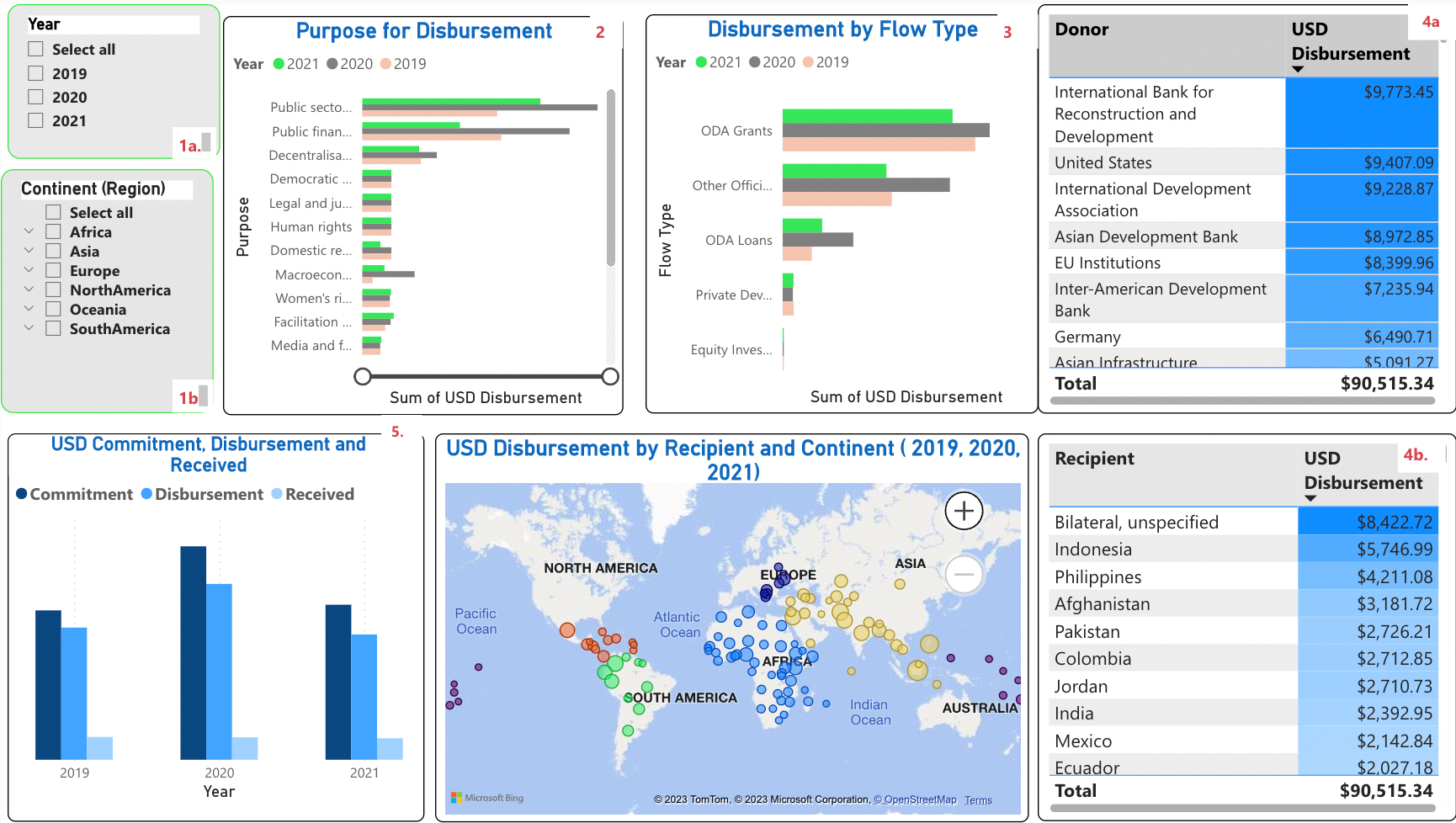Did you know that more than a quarter (25.4%) of total USD disbursement for three consecutive years (2019-2021) was meant to improve Public Sector Policy and Administrative Management globally?
For the past three years, we at TAI have taken up the responsibility of sharing available data trends in funding for transparency, participation, and accountability (TPA) and good governance issues across the globe. Our focus has been on the funding by government donors, which is the lion share of support, and which we can complement with analysis of what our philanthropic members are funding (as published via their own individual public funding databases.)
Read our own analysis here, but this is the chance for you to do your own custom searches.
Last year, our then Atlas Fellow Mehdi Bousnina presented a PowerBI dashboard using OECD data on governance and civil society for 2015, 2019, and 2020. This year, we again draw on the OECD data and compare three consecutive years (2019, 2020, 2021) in an updated PowerBI dashboard. If you are intrigued to know more about TPA funding and want to peruse more by yourself, this blog is your ready “how to” guide.
If you have any problems, don’t hesitate to reach out to me at [email protected].
Happy data searching!
Before you begin your journey, please take note of the following:
Units are millions of United States dollars in nominal terms.
The dashboard is based on reported disbursements.
The years displayed are years of the disbursement, not the start of the project.
The data provided below was extracted from OECD stats in the summer of 2023.
All categories labeled “unspecified” are funding not disbursed to individual countries.
*Feel free to navigate through the dynamic dashboard in Fullscreen mode
1) Filtering geographic coverage and years: Data presented is disaggregated geographically by continent, region, and countries as provided by OECD. Further year-on-year disaggregation is also provided in the dashboard. The default data is global. To focus on a specific continent, region or year use the filters that appear in the top left frame (1). A click on each continent will display regions categorized under them. If you want to focus on a specific country, click on the country’s name in the Recipient table (4b) or locate it on the map by clicking the blue bubble.
The continents/regions (1b) include:
Africa (Eastern Africa, Northern Africa, Sub-Saharan Africa, Unspecified)
Asia (Central Asia, Eastern Asia, South Asia, Southern Asia, South-eastern Asia, Western Asia, Unspecified)
Europe (Balkans, Eastern, Southern, Unspecified)
North America (Caribbean, Central America, Unspecified)
Oceana (Melanesia, Micronesia, Polynesia, Unspecified)
South America (Caribbean, Southern America, Unspecified)
The years (1a) available are:
2019
2020
2021
Note that all the blue points in the map are clickable and that you can use your mouse wheel to zoom in and out.
2) Purpose of funding
The purposes are from the I.5.a. Government & Civil Society-general code. At TAI, we see many of these are directly related to TPA issues or at intersections. They include:
Human rights
Legal and judicial development
Facilitation of orderly, safe, regular, and responsible migration and mobility
Women's rights organisations and movements, and government institutions
Democratic participation and civil society
Ending violence against women and girls
Media and free flow of information
Public sector policy and administrative management
Anti-corruption organisations and institutions
Domestic revenue mobilization
Legislatures and political parties
Public finance management (PFM)
Elections
Decentralization and support to subnational government
Public Procurement
Macroeconomic policy
Government & Civil Society-general (when not tied to a specific purpose)
3) Disbursement by Flow Type
This is used to refer to the types of funding as categorized by the OECD. You will find the following.
ODA Grants
Other Official Flows (non-Export Credit)
ODA Loans
Private Development Finance
Equity Investment
As mentioned above, the categories are clickable and so are years. They lead to a focused view.
4) Funding data
The “Recipient” table (4b) describes countries or regions designated as benefiting from the disbursements listed. The “Donor” table (4a) lists the government, organization, or agency providing funding and how much during the above-mentioned period. The amounts columns are arranged from highest to lowest in both cases, and the blue color shading represents such trend.
Countries and donors are clickable to focus on that funding flow.
The different purposes are clickable and lead to a focused view.
5) Disbursement
This dynamic chart provides a comparison between reports on what was committed, what was disbursed, and what was received over the years. This chart is also clickable and all the focused views elsewhere in the dashboard lead to a focused view in the funding amounts chart. We wanted to feature this to show the differences and highlight how “received” is underreported.
